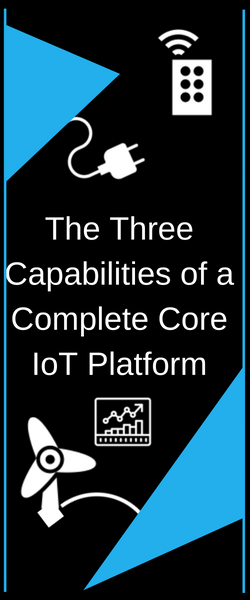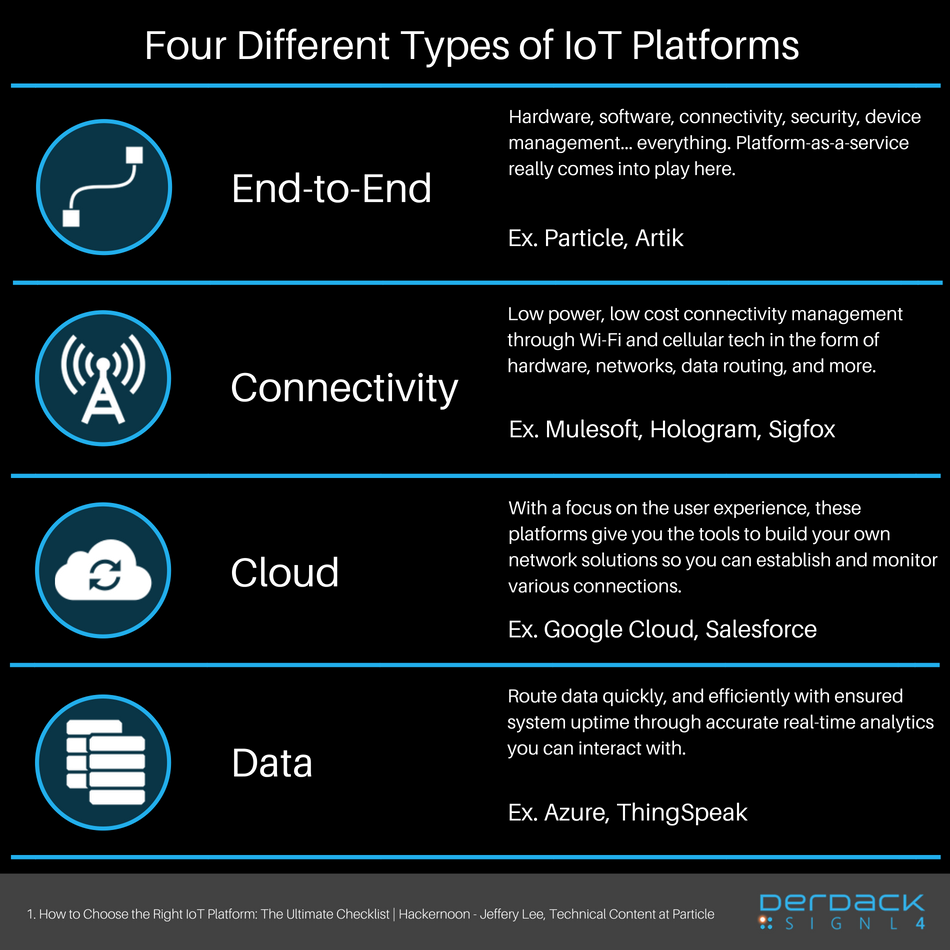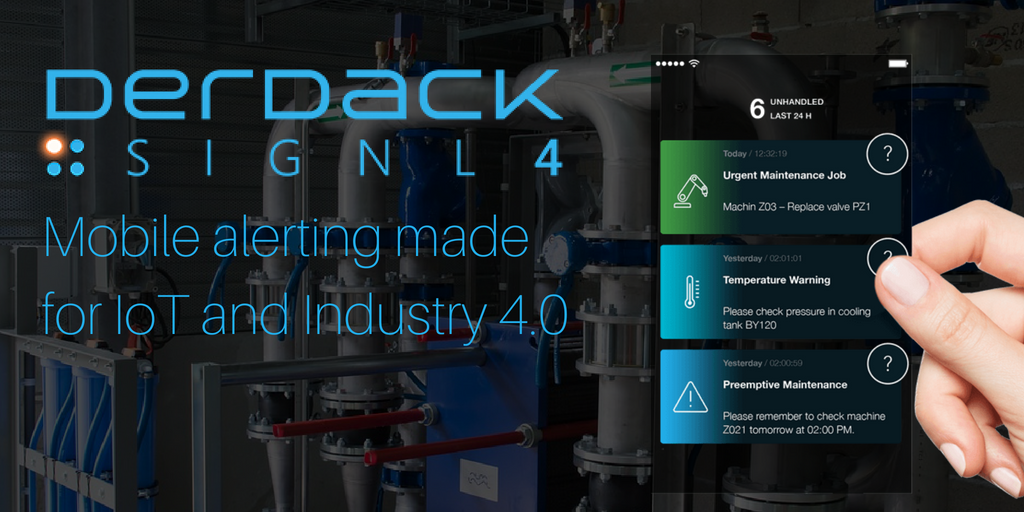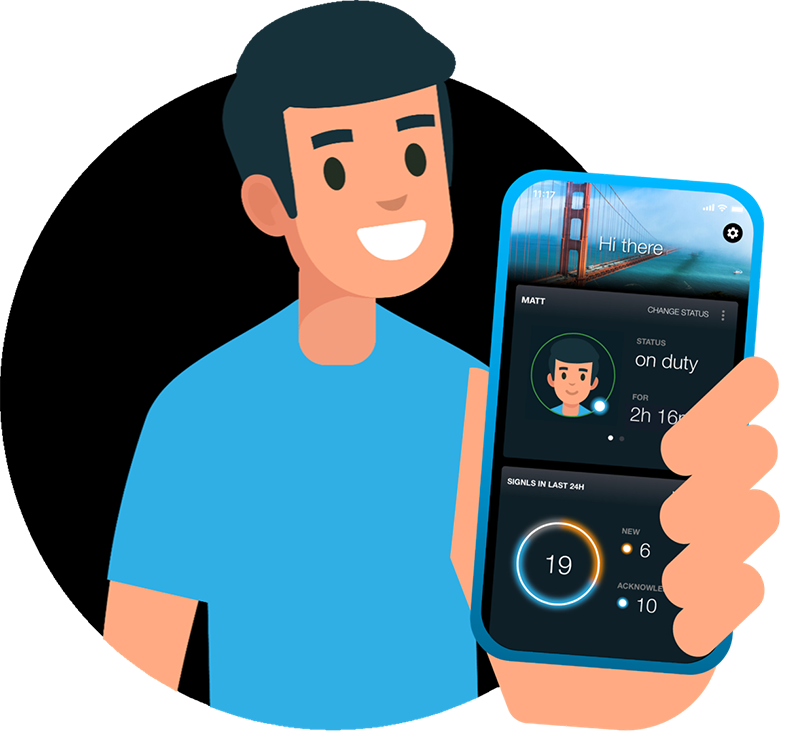The Internet of Things (IoT) has become an exciting area of work. Businesses are rapidly adapting various IoT products whether they realize it or not. Thanks to the booming development of Internet of Things, users across industries can now easily monitor, trigger, and maintain processes and equipment with a brilliant software and strong networks. The infrastructural pieces that connect sensors, gateways, and networks together are called IoT platforms. These roughly defined IoT elements are perhaps the most important part of IoT system. Having a core IoT platform in place makes it possible for users to adapt, scale, and manage an ever-evolving tech environment. This is great, but it is simply not enough for every team’s needs.
What about mobile alerting? Is a forwarded text or email enough to assure immediate critical response on a shop floor? In reality, the answer is no. Today, I will go over what an IoT platform is, and why mobile alerting is not properly addressed by most IoT platforms on the market. Let’s dive in!
What makes a complete IoT Platform?
An IoT platform is really the glue between all elements of a healthy IoT system. It consists of core hardware and software that connects sensors, applications, users, and data so businesses can focus on tasks at hand. Some solutions provide complete IoT coverage while most serve as add-on components to larger IoT systems. The Boston Consulting Group (BCG) conducted a study where less than 15% of vendors actually provide a complete IoT platform solution. Three capability areas were identified and used to assess the claimed completeness of IoT platforms on the market. Below I have briefly identified what each of these areas entail:
[cv_column_row spacing=”normal” v_align=”true” styling=”none” entrance=”none” layout=”1/3+2/3″ visibility=”all”]
[cv_column]
[/cv_column]
[cv_column]
1.) Application Enablement | Customizing IoT solutions
![]() API/SDK documentation
API/SDK documentation
![]() Integrated development environment
Integrated development environment
![]() Rule engine and event management
Rule engine and event management
![]() Integration for business apps and systems
Integration for business apps and systems
2.) Data Aggregation and Storage | Generating business insights
![]() Storage scaling
Storage scaling
![]() Inbound stream data
Inbound stream data
![]() Remote data synchronization
Remote data synchronization
![]() Multimodal database support
Multimodal database support
3.) Connectivity Management | Enabling M2M and user communication
![]() Device Management
Device Management
![]() Network monitoring
Network monitoring
![]() User and device authentication
User and device authentication
![]() Multi-device connectivity
Multi-device connectivity
[/cv_column]
[/cv_column_row]
Currently there is no clear definition of what a IoT platform even is. This is a problem because similar, yet different products thrown into one pot. In 2017, it was reported by IoT Analytics that there were 450 players in the IoT platform market, and that number has continued to grow since then. Not every one of those platforms is a complete solution, and not every customer will understand that.
Below is a small infographic that explains how different IoT platforms can be. This is not the 100% correct way to categorize different IoT platform offerings, but I like how Jeffery Lee of Particle broke it down.
How Most IoT Platforms Address Remote and Mobile Monitoring
By now you understand that not all IoT platforms are created equal. In the same sense, not all IoT platforms include mobile alerting or monitoring solutions. Device management, API’s, and network connectivity are all nice, but mobile response teams cannot work effectively when IoT platforms are managed exclusively via desktop. Additional task assignment, acknowledgement, closing, and more is almost always limited to a dashboard that can be difficult to monitor even with some kind of controller in place. It is nearly impossible for a busy industrial worker do their job and find time to monitor a desktop dashboard located elsewhere. Alerts have to make it out of the control room to the people that need it the most.
Mobile workers are, in fact, “things” to account for in IoT, especially when simple SMS or email forwarding fails to get the job done. Shop floor workers and field teams need reliable alerting, so that actionable information is received when problems arise. Unfortunately, many IoT platforms do not keep mobile operations in mind when delivering service to these agile businesses. When IoT platforms fail to provide critical mobile alerting to teams, businesses should seek out a Software-as-a-Service (SaaS) solution to close such gaps in communication. SIGNL4 is perfect solution for businesses looking to expand IoT alerting and monitoring capabilities to their mobile team.
Add Critical Mobile Alerting with SIGNL4
Standard business push notifications are a thing of the past. Generic chat applications create “chatter” which is detrimental to agility needed in the field. Spamming emails and automated texts are not super effective. Your operations team deserves better. Fortunately, SIGNL4 is a mobile operations app that transforms how teams handle critical events and information in real-time.
The lightweight SIGNL4 app provides critical mobile alerts with tracking and escalation via push, text and voice, alert-centric mobile chat, duty management, and out-of-the-box connectivity to various ERP, MES, SCADA and IoT systems. SIGNL4 helps you connect critical systems with your shop floor teams by supporting or even bypassing operators in the control room. Mean-time-to-response in some cases is 10x faster for operations teams using SIGNL4 over traditional alerting methods. This becomes reality thanks to persistent mobile alerting and real-time event tracking. Those core competencies do not only notify essential personnel of maintenance requests or system errors, but it alerts them with enriched actionable information. SIGNL4 teams deserve more than generic notifications, so we made sure that on-duty personnel receive the data needed to begin troubleshooting before they arrive to the scene. Team collaboration is optimized further with task ownership and chat-based updates within alerts, so that your team is informed throughout the entire critical event life cycle.
Example: Adding critical alerting to Azure IoT Central
Here is great example of how SIGNL4 complements an IoT platform, in this case Azure IoT Central (and Pycom as hardware):
This is just the beginning of SIGNL4’s capabilities. Do not suffer from the limitations of an IoT platform or enterprise system; start your free trial today to unlock everything SIGNL4 has to offer!
Transform Your IoT Platform with Mobile Alerting
Are you already too committed to your organization’s IoT platform, but dream of having mobile alerting capabilities for your mobile team? Enhance your mobile operations with ease by pairing SIGNL4 with your IoT platform and various IoT devices today. Plug&Play API and webhook integrations allow users all over the world to connect their apps and systems in minutes, so that businesses can get back to what they do best.





